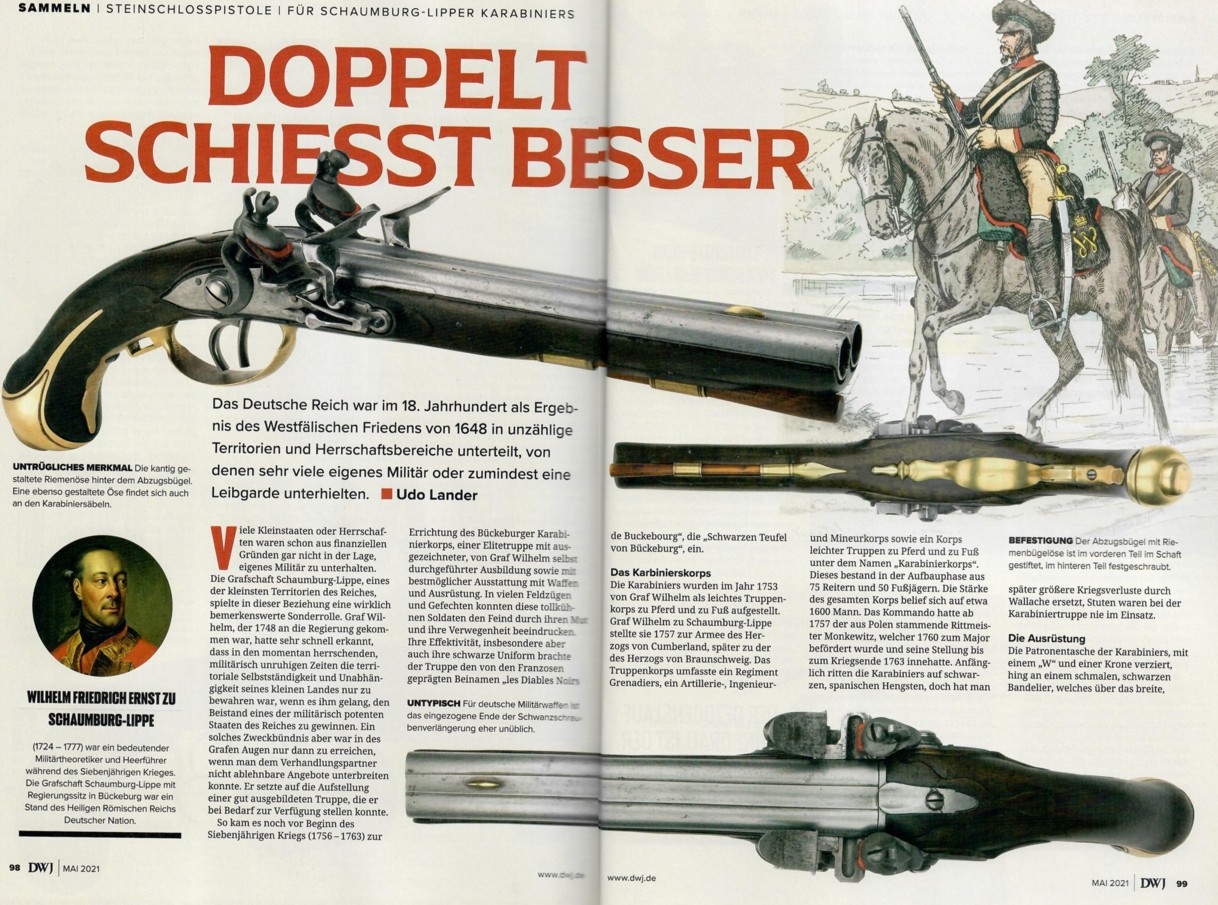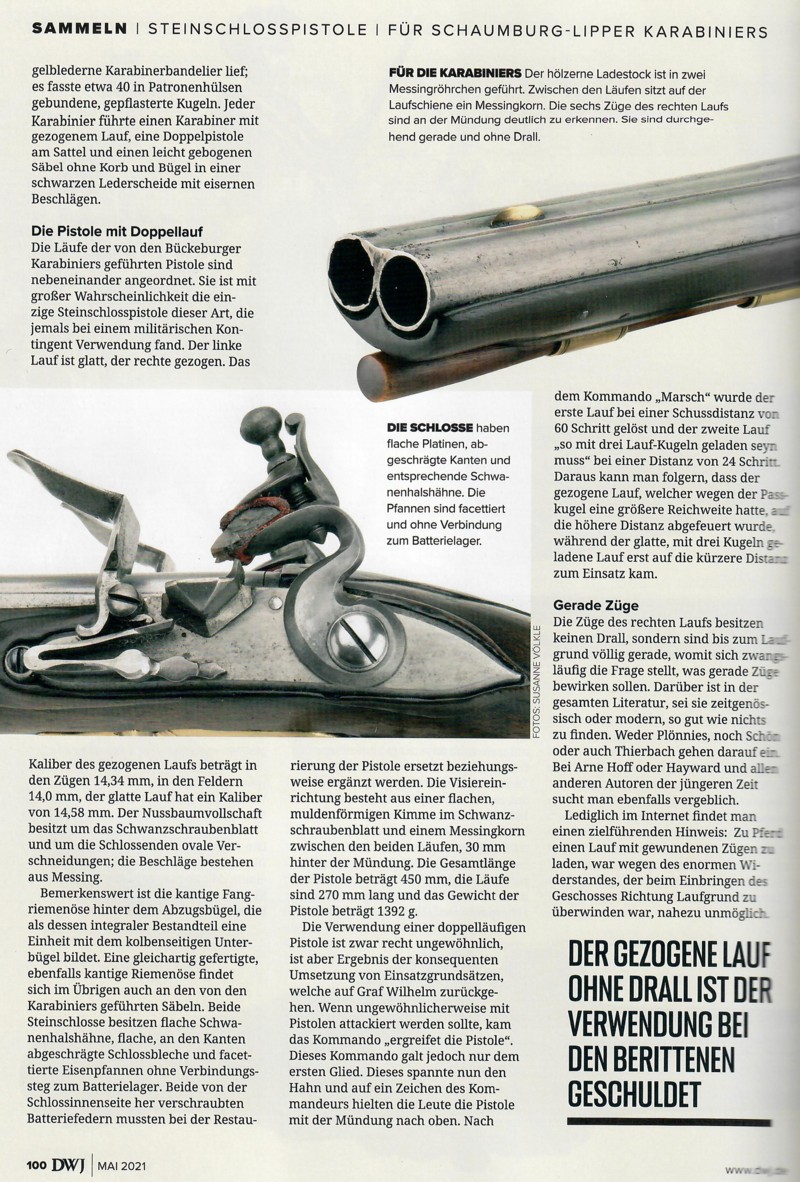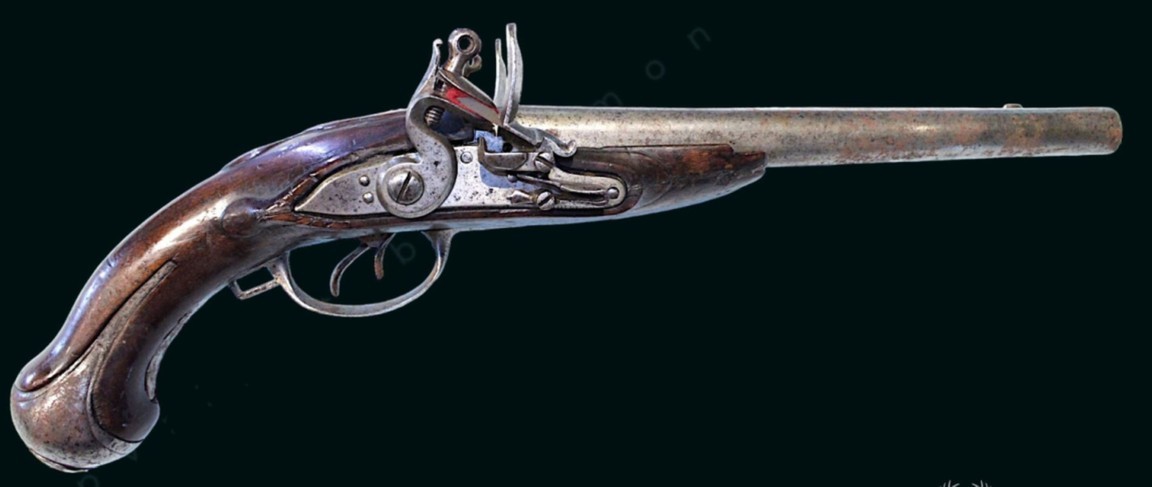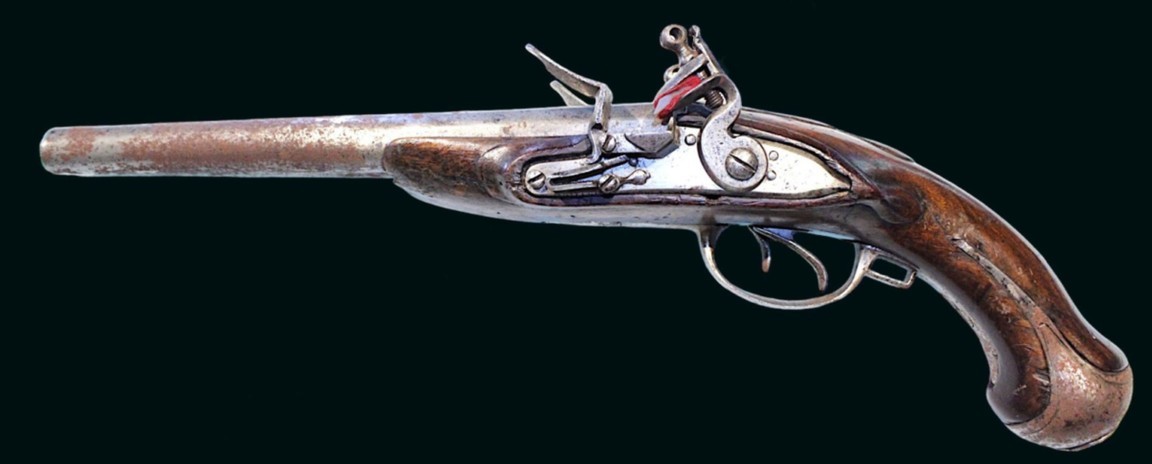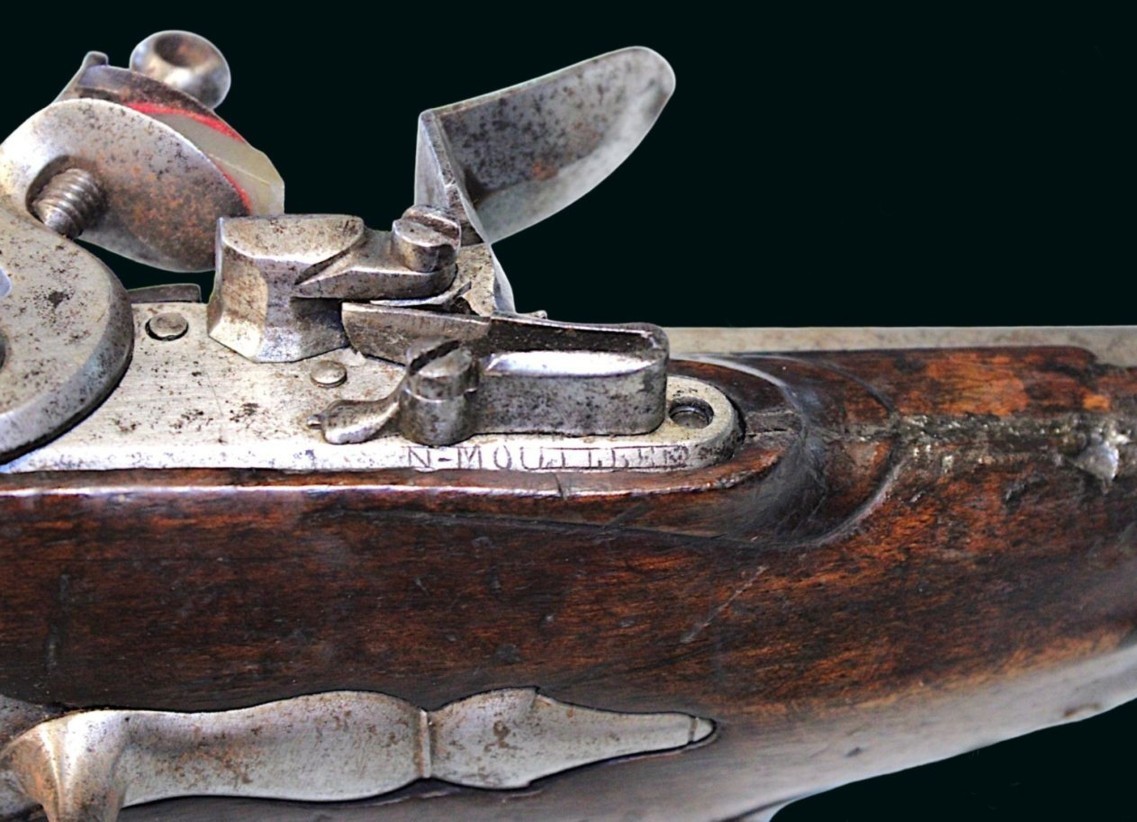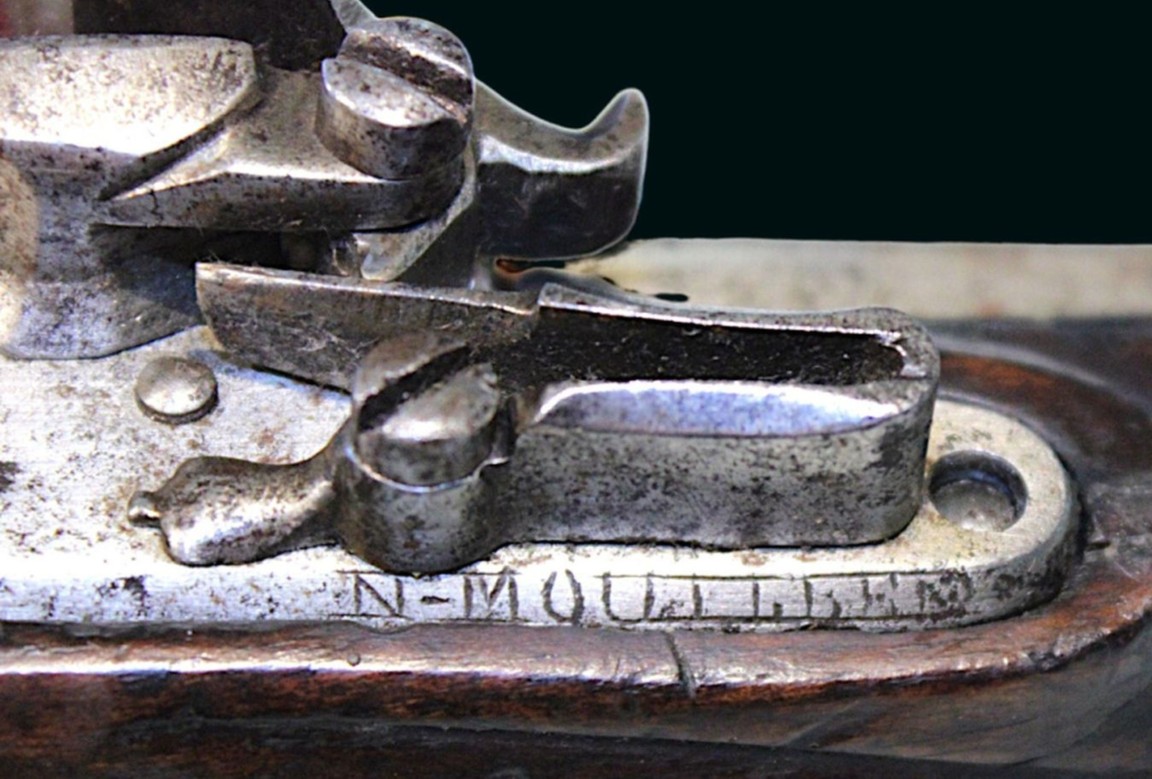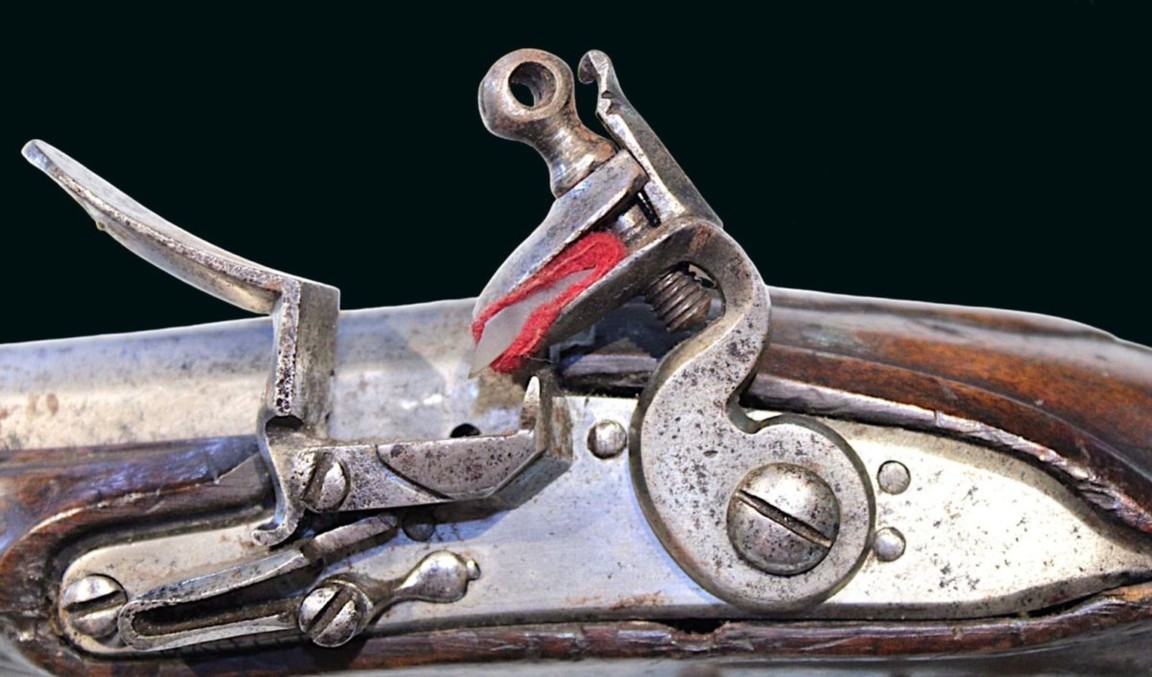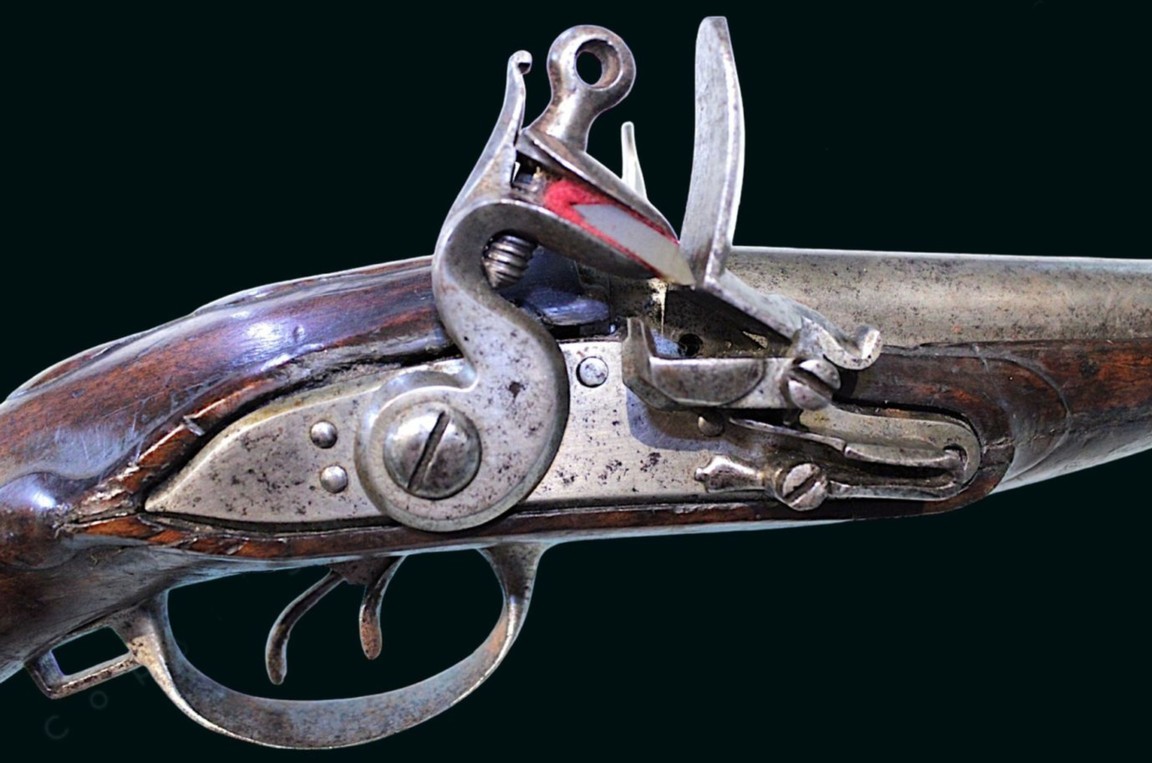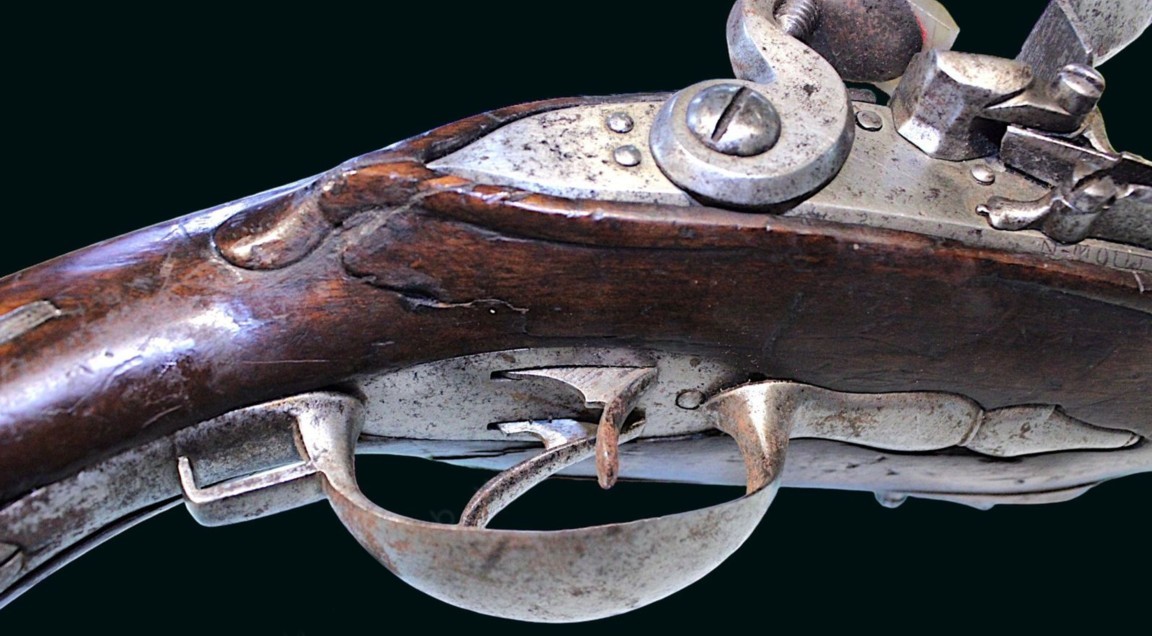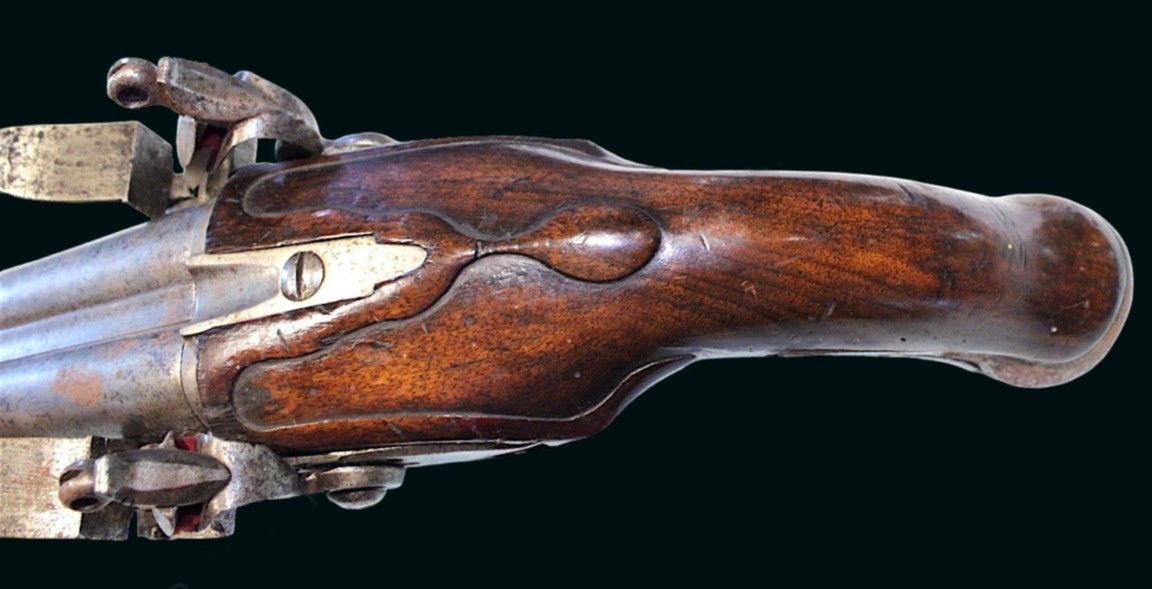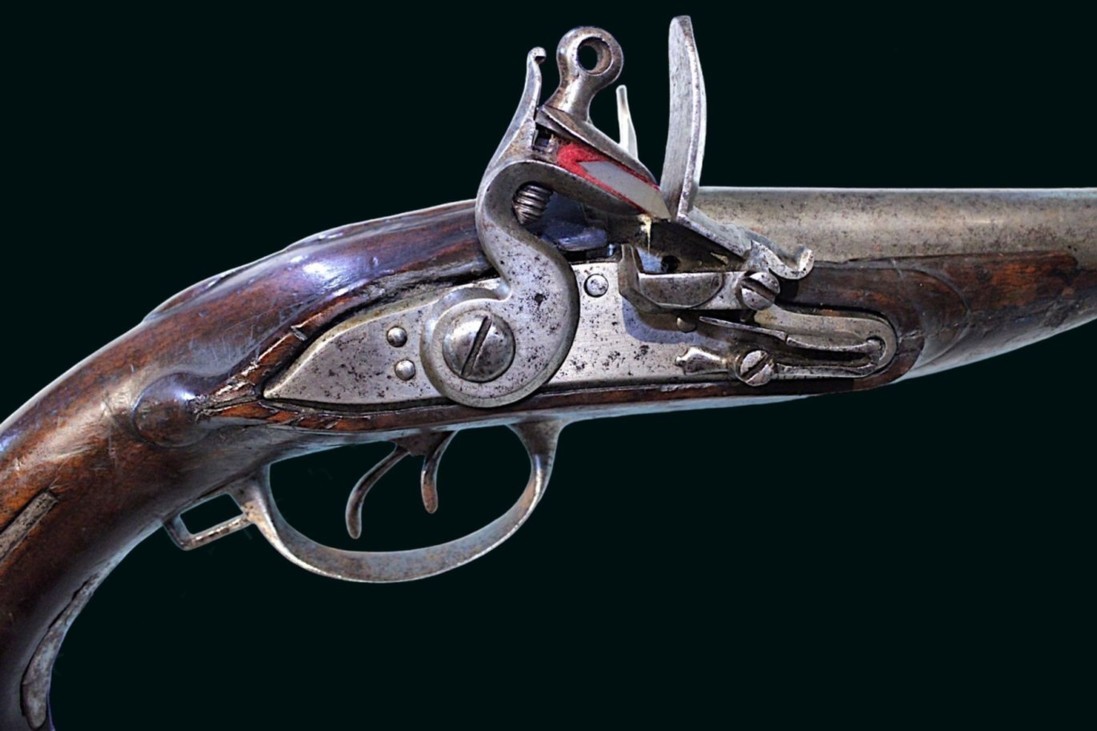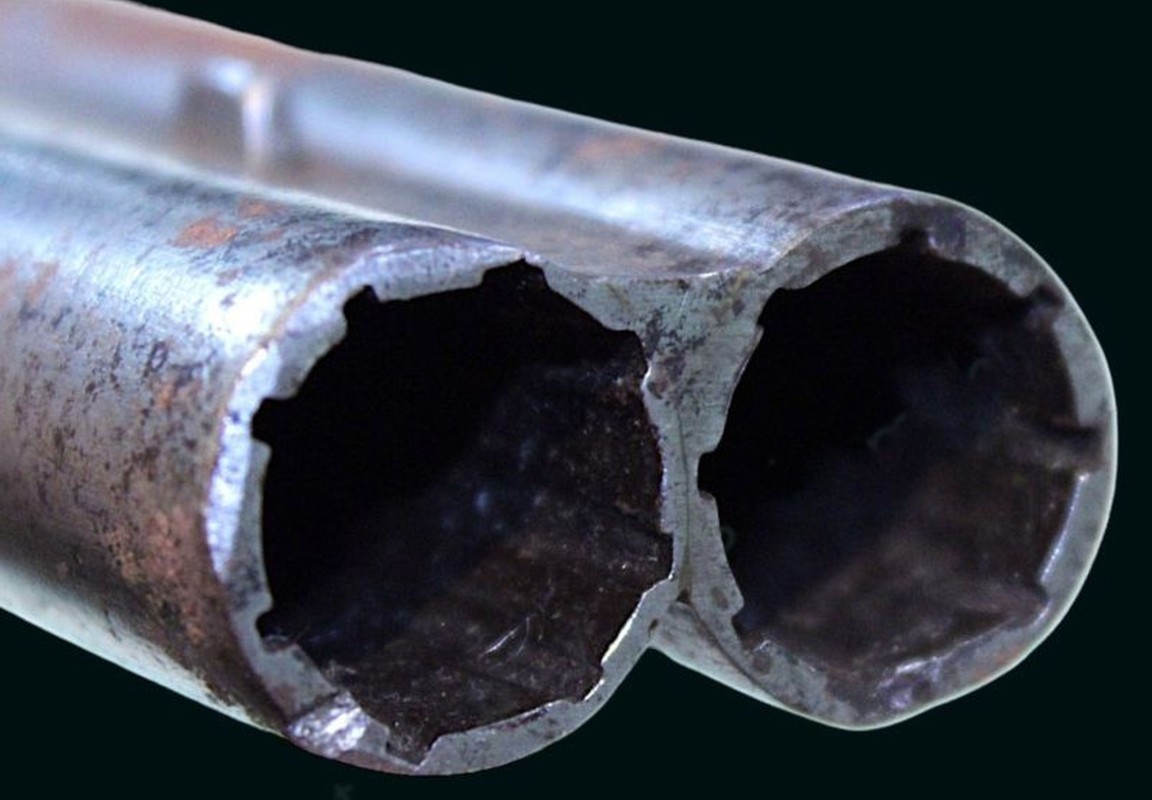Some of the most beautiful work of this craftsman, and many others, are in this book “Liège Gunmakers through their Work. 1800 - 1950”.
For more detail see: LIEGE GUNMAKERS
Mouillet Nicolas
This flintlock pistol clearly dates from the end of the
18th century. It has two barrels juxtaposed in a table, with well-marked
rifling. Very similar weapons are attributed to various hussar regiments,
notably by the applicant who wrote an article on a pistol of very similar make.
This article, published in the Deutsche Waffen Journal of May 2021, is very
interesting. It mentions that the pistol in question had, in the case of the
Bückelbrug Carabinieri, a rifled barrel and a smoothbore. This was a corps
created in 1753 by Count Wilhelm Friedrich Ernst zu Schaumburg-Lippe
(1724-1777), a mini-state of the Holy Roman Empire. These carabinieri, 75 on
horseback, 50 on foot, wore a black uniform, which gave them the nickname "Black
Devils". Their pistols were 45 cm long, their barrels 27 cm long, and their
weight 1392 grams. The left smoothbore barrel had a diameter of 14.58 mm, the
right rifled barrel 14.34 mm. The DWJ article does not mention the manufacturer
of these pistols.
Also note that the rifling of the pistol presented here
should be straight.
The owner states that the fittings of this pistol
(trigger guard, grenadières, and other mouthpieces) are made of iron, but that
he knows of identical examples with said fittings made of brass.
Around the same time (around 1790), the French
Gendarmerie (successor to the Maréchaussée) was equipped with a small,
luxurious, large-caliber pistol, named the "Pistolet Modèle An IX" (see Argus du
Pistolet à Silex by H-C Boulez). On the REGULATION version of this pistol, all
the fittings are made of iron; But this pistol was also so popular with the
general public that many gunsmiths copied it... but fitted with brass fittings.
The standard version was produced ONLY by the Manufacture de Maubeuge - which
also produced pistols for the Navy and Dragoons, as well as the one assigned to
the former Maréchaussée. This suggests that the pistol examined here was indeed
intended for standard use.
Let's return to the pistol presented here: the only
marking that allows us to trace the origin of this weapon is a signature on the
lock: N. Mouillet. In the book "Qui est qui de l'arme en France de 1350 à 1970"
(Jarlier), we find:
"Mouillet (& Cie) - arms dealers in Liège in 1785-1799. Association of
Nicolas Mouillet, son of Henry - Nicolas Martiny, son, and Jacques-Antoine
Verlache." »
A deed of incorporation of a general partnership
"MOUILLET & Cie" in 1785 does indeed mention this association (Gaier C. "5
Centuries of Liège Armoury"). Some information is available on the website.
Connections have also been noted between Malherbe in
Liège and N. Mouillet in Amsterdam.
Similar objects are easily found on merchant sites.
Unfortunately, the available
information is insufficient to identify the intended purpose of this pistol:
regimental? law enforcement? civilian use?
Chris, HPH, Marcel, GP et Dirk
Ziesing aussi remercié pour l’envoi de l’article du DWJ.
